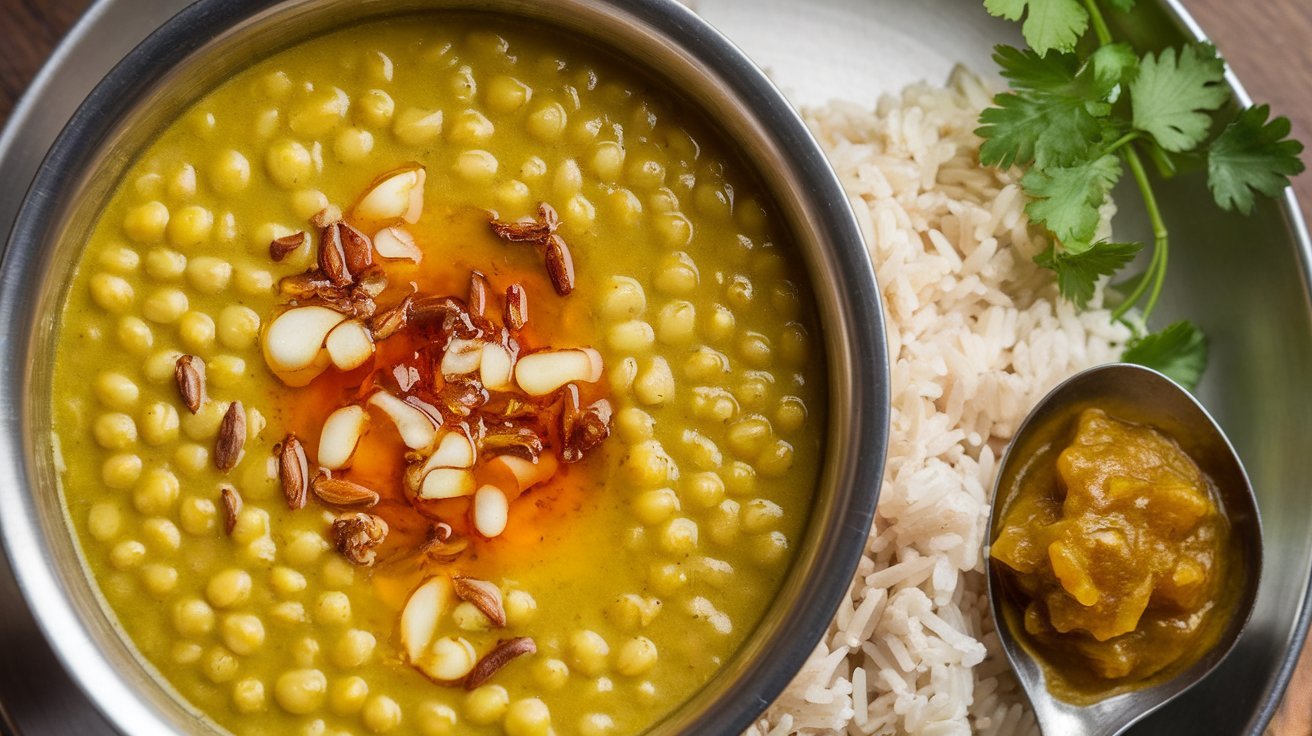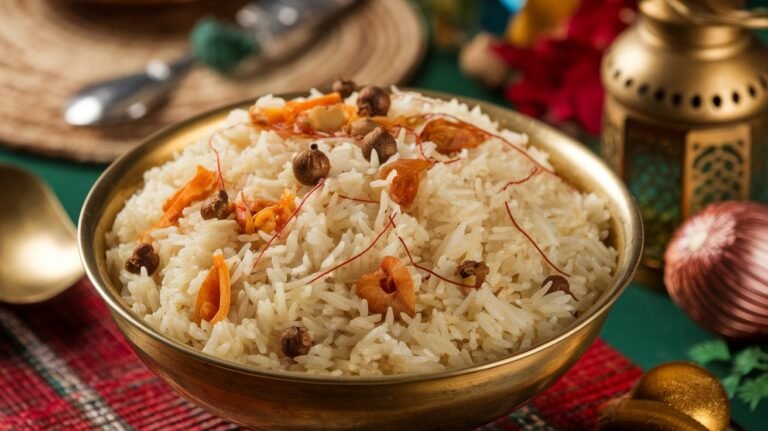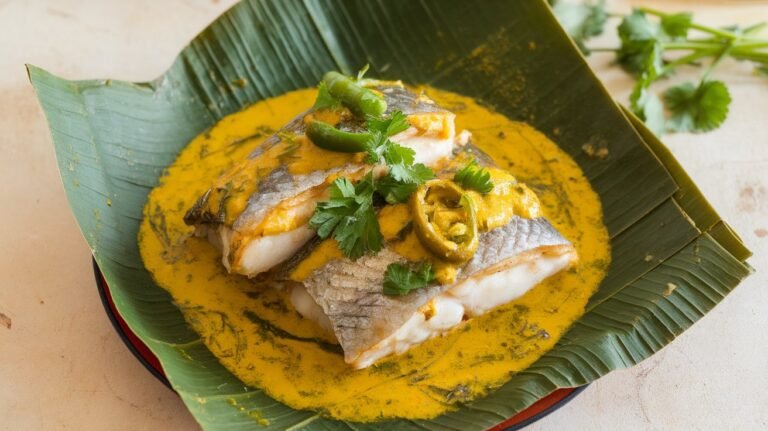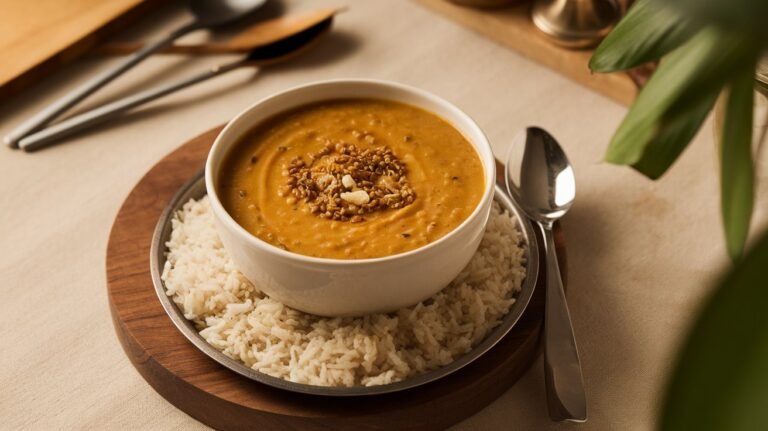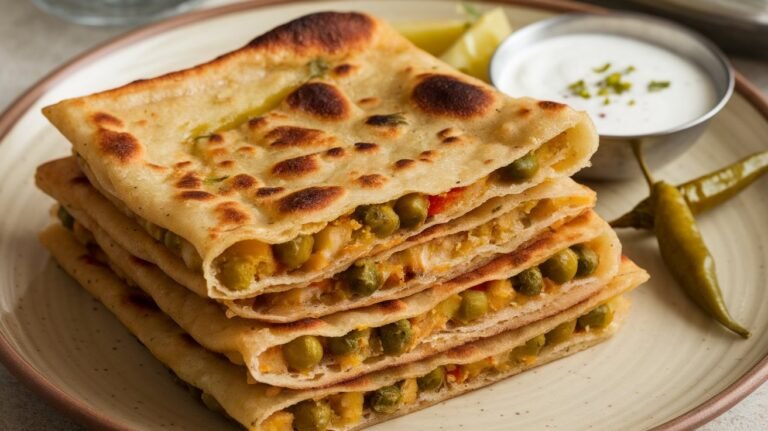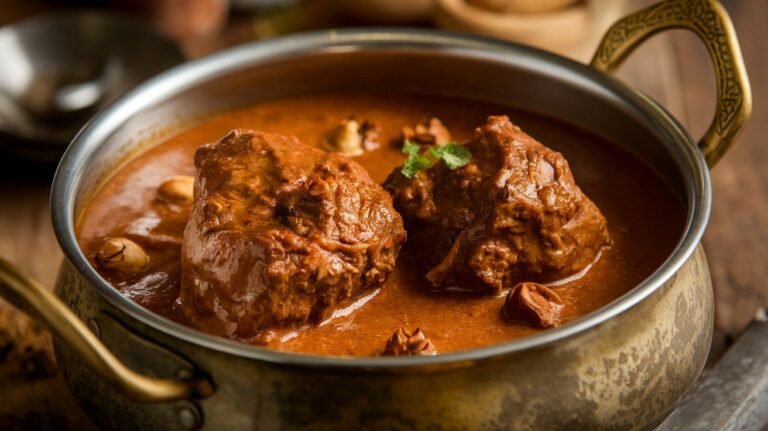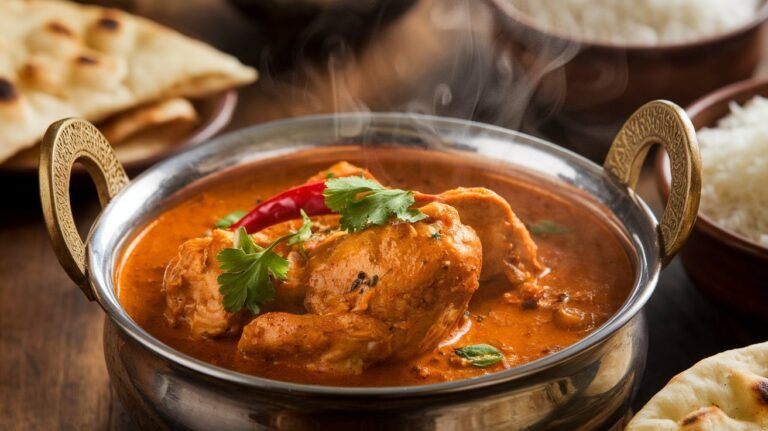Buttery Yellow Split Pea Dal: The Real Reason Ghee Exists
You know those meals that feel like a weighted blanket for your soul?
Yeah. This is one of them.
Buttery Yellow Split Pea Dal — or moong dal if we’re being legit — is simple, soothing, and sneakily flavorful. It’s not trying to impress anyone. It’s just here to make your day better, one golden spoonful at a time.
This is the dal your grandma probably made when you were sick, tired, cranky, or just cold. And honestly? She was onto something. This stuff is liquid comfort. Soft lentils. Gentle spices. A spoonful of ghee that makes it all sing.
Let’s make some edible therapy.
Why This Dal Deserves Icon Status
- Ready in under 30 minutes. No excuses.
- Cheap, easy, and requires zero emotional labor.
- Tastes like home, even if you’re very far from it.
- Naturally vegan if you ditch the ghee (but don’t — it’s the best part).
Ingredients
It’s pantry-core in the best way:
- 1 cup yellow split moong dal (split yellow lentils)
- 3 cups water
- 1/2 tsp turmeric
- Salt to taste
For the tempering (tadka):
🍫 The Ultimate No-Bake Dessert Ebook 🍓
30 mouthwatering no-bake recipes you can whip up in minutes — creamy cheesecakes, fruity parfaits, chocolatey bars, and more!
- ⚡Quick & easy — no oven required
- 📖30 recipes + bonus treat
- 🍓Chocolate, fruit, nutty & refreshing flavors
- ✨Beautifully designed, instant download
- 1 tbsp ghee or oil
- 1/2 tsp cumin seeds
- 2–3 garlic cloves, sliced thin
- 1 dried red chili (optional)
- Pinch of asafoetida (hing), optional but elite
- Optional: fresh coriander, squeeze of lemon juice
Instructions
This is the culinary equivalent of “don’t overthink it.”
- Rinse the dal well until the water runs clear. You don’t want starchy sludge.
- In a pot, add the dal, water, turmeric, and a little salt. Bring to a boil.
- Lower the heat and simmer for 20–25 mins, until the dal is soft and almost melt-y. Skim off any foam if you’re feeling responsible.
- Use a whisk or spoon to mash it lightly — it should be thick, smooth-ish, and comforting. Like soup, but better.
Now for the ✨tadka✨ — aka the drama.
- In a small pan, heat the ghee. Add cumin seeds and let them pop.
- Toss in sliced garlic, fry until golden (not burnt — we’re not monsters).
- Add the dried red chili and hing if using. Let the aroma slap you in the face (in a good way).
- Pour this over your dal. Listen to that sizzle. That’s flavor entering the chat.
- Stir, taste, adjust salt, and maybe add a squeeze of lemon or some coriander if you’re feeling fresh.
Common Mistakes (Because You Can Still Mess Up Dal)
- Undercooked dal = sadness. Let it get fully soft.
- Skipping the tadka. Just… don’t. That’s the whole show.
- Burning the garlic. There’s a fine line between golden and bitter. Stay on the right side.
- Not enough salt. It’s dal, not baby food. Taste it.
Add-Ons & Upgrades
Feeling spicy? Bored? Fancy? Here’s how to switch it up:
- Add chopped tomatoes or onions during the boil for more texture.
- Stir in a handful of spinach at the end for a nutrition boost.
- Add green chilies to the tadka if you want heat.
- Top with a spoon of yogurt or a drizzle of chili oil. Trust.
Calories (Per 1-Cup Serving)
- Calories: ~230
- Protein: 12g
- Fat: 7g
- Carbs: 30g
- Fiber: 6g
So yes, it’s basically healthy — even with the ghee. Especially with the ghee.
FAQ
Can I use red lentils instead?
Yes, but the texture will be a bit different. Still good, just not the same classic vibe.
Is this freezer-friendly?
Totally. Just freeze in portions and reheat gently with a splash of water.
What’s the best rice to serve this with?
Steamed basmati, always. Or jeera rice if you’re feeling cute.
Is ghee really necessary?
No. But also… yes. It’s called buttery dal for a reason.
Final Thoughts
This dal doesn’t need to be flashy. It’s not trying to go viral. It just wants to feed you, comfort you, and maybe put you into a post-lunch nap coma.
And honestly? That’s more than enough.

